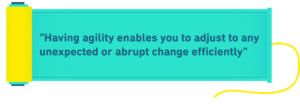
May 17, 2022 | Business Innovation, Business Strategy, Insight
Much has been written about the use of customer and market insights instead of simply generating them. Leading brands typically excel at understanding their customers and markets for developing strategies for sustainable growth, creating superior customer experiences, driving continuous innovation, and increasing the efficiency and impact of their marketing and sales activities.
They see insights as generating the fact base that will enable them, for example, to optimize their offering portfolio, inform their innovation programs, focus their marketing and sales programs, or setting the right prices. Insights reveal what your customers value, to what extent your company delivers it, how customer and market requirements evolve, and which tactics you can deploy to improve your performance relative to your competition.
Based on our consulting engagements and the impact analysis of our work, we dare to say that organizations leveraging customer and market insights typically outperform their peers in two key areas: sales growth and gross margin. Two of the key questions that we often get in this context relate to the key success factors for excelling at this and understanding the relationship between strategy, insights, and competences. So, here are our selected thoughts on the topics.
Insight engines are ingrained in today’s business strategy and stakeholder experiences
The insight engine drives an evidence- and facts-based understanding of your customers’ needs or motivations and – more broadly – of the drivers, trends, and directions of your business environment. It powers business decisions and strategy. It also informs your marketing decisions and activities and sales processes. In summary, the key capability of the insight engine is to produce all the data required for business strategy and for powering more proactive, efficient, and predictive marketing, sales, and customer service.
Treating the insight engine as a pure technical set of capabilities results in an inevitable failure. Above all, it should be seen as a strategic capability including a number of well-known core competencies that can be divided into data, operational, and people competences. Most of these competencies are related to business acumen, organizational culture (building a data-driven culture as part of this), and ways of working that in today’s business can represent a pivotal foundation for competitive differentiation.
In summary, you need to understand what customers really want, what they are likely to want in the future, to what extent they are getting it from your company today, and how you can keep them coming back for more.
The insight engine is powered by competencies
Competencies represent a pivotal set of building blocks when it comes to bridging the gap between data and strategy, i.e., turning raw data into evidence- and facts-based business decisions. More specifically, these are the most critical core competencies required in insight today:
- Data competencies. This is about the ability to extract value from disparate data sources by generating a single-market, single-customer view that is shared and used across your entire business. Data aggregation, data enrichment, data synthesis, and data activation are the key concepts here.
- Operational competencies. Increasingly, this is about a relentless focus on imagining the future and the idea of experimentation. The forward-looking orientation focuses on anticipating and testing future opportunities. Experimentation leverages a test-and-learn approach to identify new business opportunities, inform decisions, and optimize your processes.
- People competencies. This is oftentimes the most diverse and challenging set of competencies. For example, business acumen and business literacy are critical foundational competences in a sense that customer and market understanding are of very limited value to the business, if it does not inform a business decision. The power of story telling should not be underestimated either, as it is related to the ability to communicate insights in a usable, meaningful, and engaging manner.
In summary, leveraging insights is a holistic game. It is about the ability to integrate data, make insights-led decision recommendations, run and scale experiments, and communicate to the business (through the power of story telling). There is oftentimes a big gap between aspiration and reality. Bridging this gap is, of course, completely doable and very critical, as it takes the right strategy and insights to navigate the exponential change we face in our world today.
Dare you try? Based on our experience, we dare say that creating a corporate-level or business unit-specific strategic plan or a marketing and sales playbook that is relevant, insights-driven, and forward-looking and that also considers the concrete competencies and other relevant “enablers” required for its successful roll-out and execution will show up in your top-line and bottom-line growth.

Nov 1, 2019 | Business Strategy, Design, Insight, Strategy
Visual management utilises instinctive visual cues to convey accurate information in a succinct way. This enables management, employees and customers to receive key information at a glance.
Studies show that people remember as much as 80% of the things they see and do but only remember 10% of the things they hear and only 20% of the things they have read.
Visuality is the process of seeing or looking, but has a clear purpose, is more critical and direction oriented than merely seeing. It applies to our sensory perception and how information can be communicated quickly and effortlessly by using mainly our human sense of sight as well as our other senses. An easy to understand example of visuality and how visual perception relates to the immediate understanding of certain concepts is the white or yellow lines on a road.
Visual Management is about communication
Signs and other visual cues are put in place to help employees and customers make sense of the organisational context or business by merely looking around. Visual Management in the workplace gives structure to the space and enables the easy flow of work processes.
All it takes to understand certain operations is to look around. It is a management system that tries to improve the performance of an organisation or business. Visual Management does this by connecting and aligning the vision of the organisation, its core values, culture and goals with other work place related elements such as management systems and work processes by using human sensory experiences. These stimuli directly engage one or more of our five human senses: sight, sound, smell, taste and touch.
Benefits of Visual Management
Using Visual Management can entice staff to be more creative thinkers. Using Visual Management also means that the environment is constantly communicating with the employees and customers. This can lead to bottom-line improvements as well as improved safety in the organisation. Visual Management also helps with company-wide alignment and unity.
By displaying the current progress of projects for all to see, top management is able to receive progress information every time they look at the display. Not only does this indicate what the progress on each project is, it also indicates to staff what the next steps are as well as how to go about achieving the rest of the project objectives.
Secondly, using Visual Management encourages employee engagement by allowing ownership of goals and creating or increasing motivation among the employees. Visual Management is non confronting in its approach, but it does demand authority and represents the real time factual status of projects. It embeds a culture of continual development and improvement in every aspect of the company.
Thirdly, Visual Management can be used to convey transparency in an organisation. By having it out in the open, no information is hidden. This means that the goals and progress of the project is shared openly and they company is united in achieving these goals.
Visual Management might seem like a foreign concept to grasp, but the application thereof is without a doubt incredibly practical. Visual Management is an easily applied practical concept that could improve everything in a business, from the bottom-line through to overall company morale, overall company safety and transparency.
References:
Tezel, A., Koskela, L. J., Tzortzopoulos. (2009). The Functions of Visual Management. Conference Paper.

Sep 6, 2019 | Business Strategy, Sales
The world of sales evolved from being face-to-face for thousands of years, to telephonic sales, email sales and now, we’re in the era of social selling. Rapid technological changes are happening at an exponential rate when it comes to sales and affects us in a multitude of ways. In this blog, we will look at what the future has in store for sales consulting.
Know your consumer
This should not be something new to people in the sales world but is more relevant today than ever before. In order to sell successfully to our target market, we need to know who they are, what they want and how they want us to provide them with this great product or service. Consumer centric approaches to sales are crucially important.
Millennials now make up the largest part of the buyers over all industries. They are more focused on experiences and they want to be inspired, not just be given information from businesses and organisations. Millennials want to feel special and more and more brands are providing individualised experiences for their consumers. Engaging consumers in a hyper-targeted way can make consumers feel more appreciated which will lead to higher levels of brand loyalty. If your consumers trust your brand, they will be more willing to part with their data and information especially on important aspects such as their preferences. According to Future 100, Target, the American retail chain, does a great job at this via their Studio Connect app. This app allows customers to create products that if selected will make it to production.
As Millennials age, a new generation of individuals are entering the workforce and consumer space. Gen Z is the generation of individuals that were born in the mid 90’s to the mid 2000’s. According to Forbes, Gen Z’s account for up to EUR118 billion in spending and they will make up the biggest part of consumers in 2020. Gen Z differs from previous generations because they were born into a hyper-connected, technologically-assisted age. They grew up using social media, online shopping, smart phones and technology on a daily basis. Gen Z is very aware of their impact on the earth and how their choices can make a difference.
Environmental issues are very important to them. They prefer sustainability and minimalism over consumerism. Surprisingly enough, they prefer brick and mortar stores over online shopping. The buying style of Gen Z is ‘hunteresque’ in the way they search, explore and source the products they choose to buy. Like Millennials, they want to feel special and appreciated, with a very high awareness level of the impact of what they consume.
Use technology strategically and educate your sales force
As technology evolves, various apps and platforms exist to aid sales. However, it is no longer sufficient to just set up technological aides. Businesses have to have a spirit of innovation along with the sales tech.
Companies have to empower their sales force to be able to do optimum work. Enabling this should ideally be done by incorporating training and technology into a coherent and actionable strategy. This will enable your company to be agile in acquiring new sales people and have them performing from the start.
Consistent monitoring, educating and coaching of your sales force is crucial. With the rapid rate of transformation, it will be hard for them to do so on their own. Businesses need to have a clear-cut strategy for sales and growth, and they have to include their sales force in the actioning thereof. Forbes recommends MindTickle for this purpose.
Social Selling
In order to sell to our target market, we need to be visible where they are searching. We need to have a strong presence on social media and relevant platforms. Different social media platforms are best suited to different industries. If you are in the health, beauty or fitness fields, selling and marketing on Instagram for example might be more suited to you than LinkedIn. However, this does not mean that you should be present on only one social media platform. The more social media platforms you can efficiently manage, the bigger your reach will be.
Buyers today are very focused on the online look and feel of brands. How your brand presents themselves online will influence consumer’s perception of you. Using video in marketing and selling is an easy way to show your brand or business to the world. By collaborating with influencers, businesses can instantly become relatable, real and more human.
In order to be able to provide their employees and consumers with the above-mentioned trends, businesses have to be very secure in what their purpose is. It’s easy to lose track of the main goal a business or company has if their purpose is not clearly defined. This is crucially important in an era where change is constant, and disruption and innovation are the norm.

Aug 16, 2019 | Business Strategy, Insight, Strategy
In order for us to explore this concept, we have to fist look at what agility in business means. The marketplace is changing rapidly due to never ending and never subsiding improvements and innovations. Any strategy a business uses needs to be more fluid, rather than concrete. Organisations, businesses and brands need to shift their approach to adapt new values. This will help them to establish a mindset focused on collaboration. When leaders are more focused on co-creating and collaboration, they are more involved in the process, not just watching it unfold.

Vision + flexible roadmap
Of course you need to have a plan or roadmap when you are creating and executing any strategy. What is important here is that you, as a business or strategist, need to ensure that your plan or roadmap is flexible. Having flexibility will enable you to respond quickly, calmly and effectively to any change you might encounter. Having agility enables you to adjust to any unexpected or abrupt change efficiently.
Your company vision will always form the backbone of any strategy or plan that your organisation, business or brand employs. It serves to direct your long-term constant achievement and relates hugely to your business’ purpose. Having innovation as a value enables your company to be flexible and have an open approach to explore new offerings in your field. It also enables your organisation, brand or business to experiment and explore which of the new offerings serves your organisation, business or brand best.
Agile strategy is transformative
From the moment you adapt an agile strategy process, you should be seeing changes. Conduct your strategy in sprints rather than in marathon sessions that may take years to complete. This does not mean that you need to chuck your current strategy out of the window. When you break up an enormous task or plan into smaller, more achievable sections, it becomes easier to complete and upon completion of each smaller task, a sense of rewarding is felt by the parties involved. This helps with keeping a team motivated and inspired and helps to keep company morale high.
When you change your outlook from long term projects to shorter-term end goals, you reduce stagnation. Boredom is eliminated and the environment is conducive to productivity. When individuals know there is a short time to complete their goals, (from one day, days, weeks to at most a few months), they are more likely to give their all for the short duration of the project. Employing and executing your strategy in this manner helps people to think on their feet and further allows for innovative and creative thinking as well as problem solving.
Effective implementation of strategy
In order to execute your strategy sprint effectively, you have to have a clear and specific goal or problem in mind. You have to define the rules, explain the process and set the time constraints appropriately. If you expect your team to do too much they might burn out and the whole aspect of incorporating agility in your strategy process will flop. It is important to create a safe space where everyone is given the opportunity to speak their mind and have their voice heard without discrimination. Creative and innovative solutions often come from unexpected sources or contributors. Lastly, make sure to record the whole process, due to the time limit, every word is important and should be used to facilitate the process.





